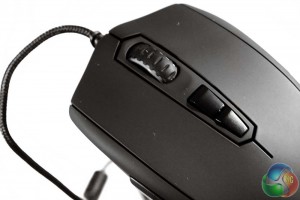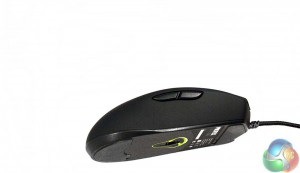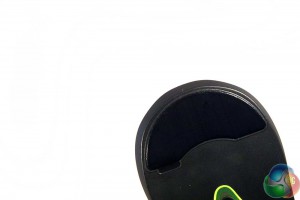The mouse itself is a pretty typical looking rodent. It has a nice, soft plastic shell that coats the entire body and buttons and is designed to accommodate all grip types. The only different materials used appear on the scroll wheel, which has rubber notches for grip and clear plastic around its edges for the ice blue LED (this can be remapped in the software) to shine through. Likewise at the rear where it illuminates a cut out Mionix logo.
The underside has the optical sensor located in the dead centre, surrounded by a Mionix logo image.
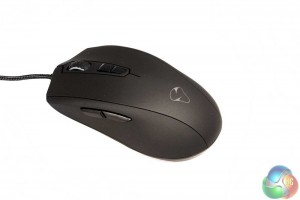
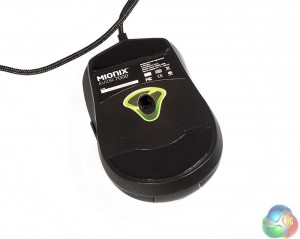
At the front end, there's five buttons in total, including the two typical left/right click ones, a clickable scroll wheel and two DPI adjusters. As you might expect, the front one raises it and the rear one lowers it. The main two buttons utilise mechanical switches, so not only should they have a fast response time, but also plenty of durability, since they're rated for up to 20 million clicks.
The sides are identical, as the AVIOR employs an ambidextrous design and has two buttons each side, which at default are mapped to forward and back (on the left hand side). The ones on the right are disabled before remapping.
The large feet on the underside of the AVIOR are made of Polytetrafluoroethylene, which I'm told for legal reasons must be named as such and not linked in any way with the common brand of that material, Teflon.
The cable is also of top quality: braided and sturdy.
 KitGuru KitGuru.net – Tech News | Hardware News | Hardware Reviews | IOS | Mobile | Gaming | Graphics Cards
KitGuru KitGuru.net – Tech News | Hardware News | Hardware Reviews | IOS | Mobile | Gaming | Graphics Cards


